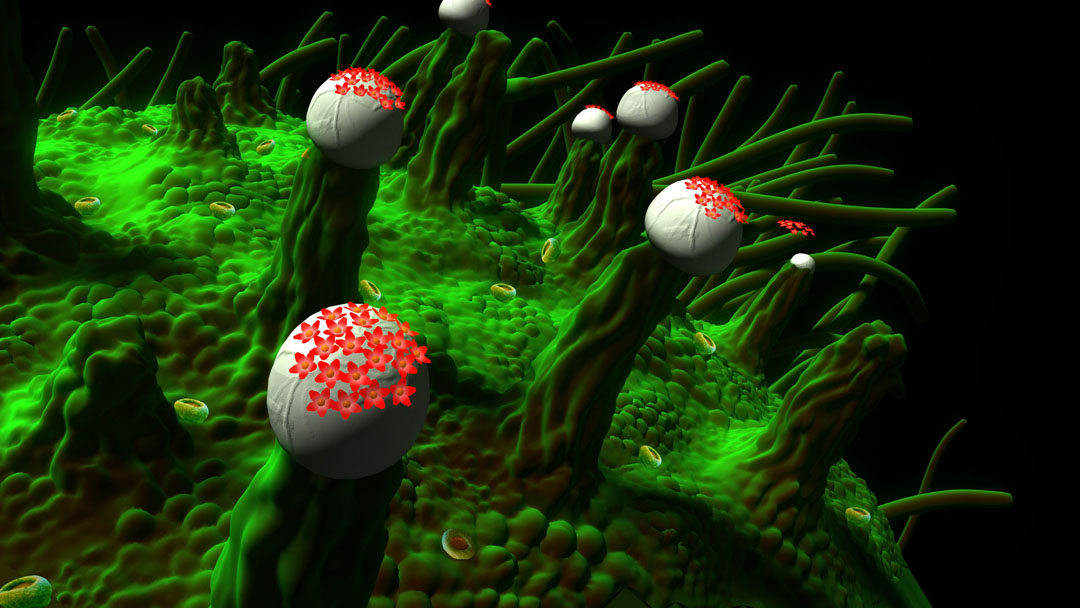This work in The Growing Garden series, created with the screen painting technique, is inspired by microscopic images of the epidermis of a plant with its peduncles termed trichomes. These protrusions slowly flex and the white caps above them swell like bubble gum, making them mushroom-like. Flowers bloom on them, ready to detach themselves to disperse into the environment. On the ground, curious floral shapes are painted with acrylic pigment. Once again the recurrent theme of this set of works is the cyclicity and circularity of nature and its vital processes.
The Growing Garden
I created a series of works as part of The Growing Garden project, since the nanoworld brought me into contact with completely new images, obtained with the most powerful optical microscopes, evoking ambiguous landscapes, alienating places that recall reality in its fragmentation.
Continuing a line of research that I had undertaken in 1983 with In Corporea Mente, I wondered about the transformation of forms, their unfolding from microcosm to macrocosm. The branched structure of a mineral, for example, is similar in shape and process of aggregation to the peripheral region of a neuron or the atomic structure of some polymers or, again, to the conformation of a tree or coral. I therefore penetrated, through these scientific images, into wonderful woods and dust clouds, which I wanted to rework in 3D, animating each of them with a series of creatures taken from the animal or vegetable world that I painted directly on the screen or canvas, multiplying the image as if it were a Zen ritual. The paradox consists of the fact that the pictorial image is the bearer of a uniqueness and, therefore, of a different DNA for each. If, through self-replication (a powerful promise of nanotechnology), cells build copies of themselves by abolishing diversity, I wanted to follow the opposite procedure: through what is seemingly identical I sought to reanimate the differences.
